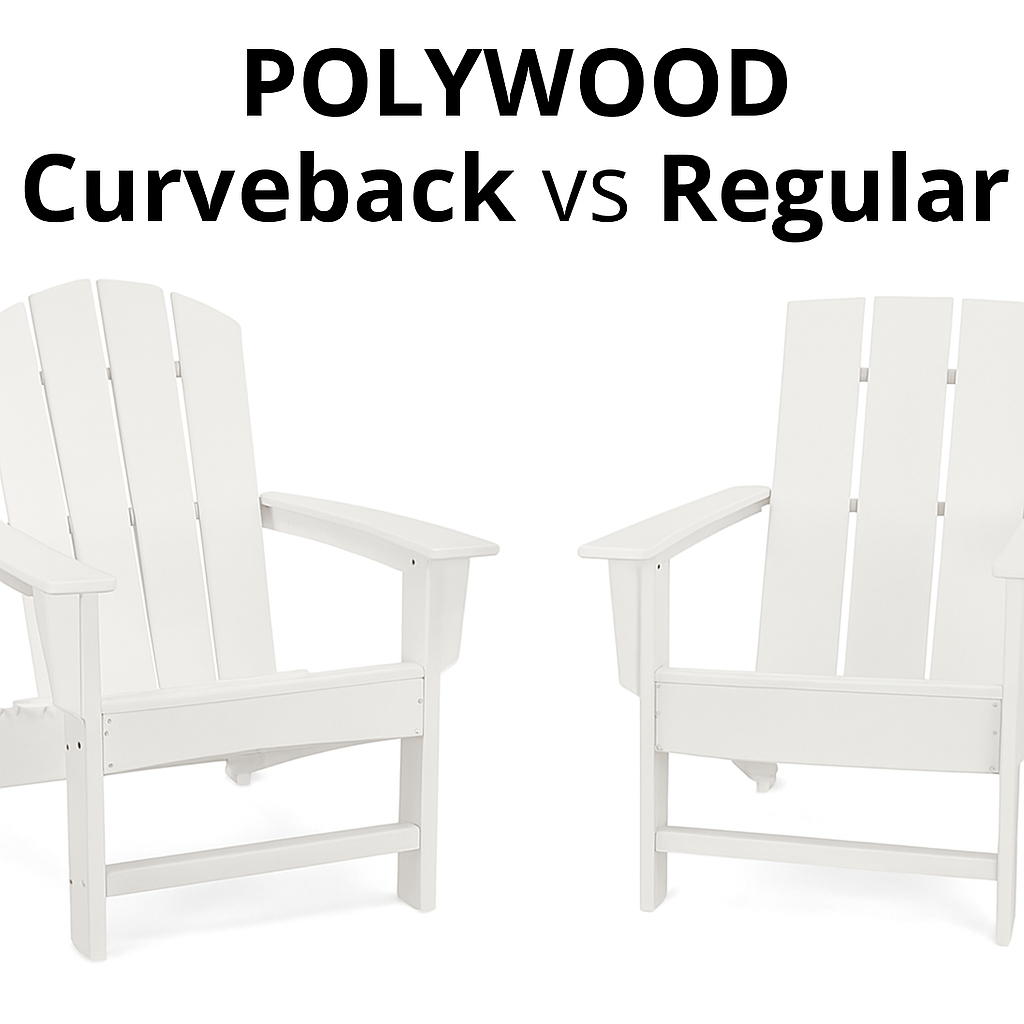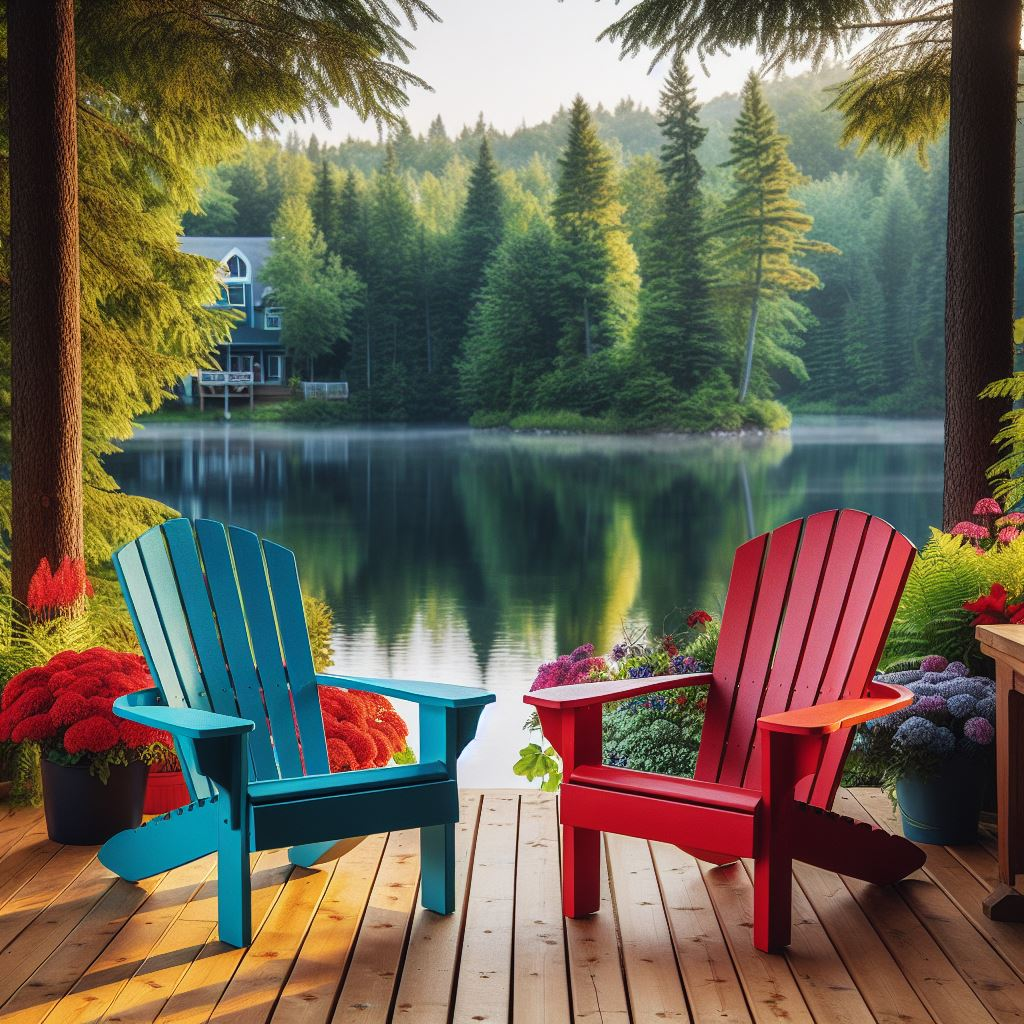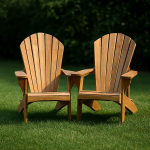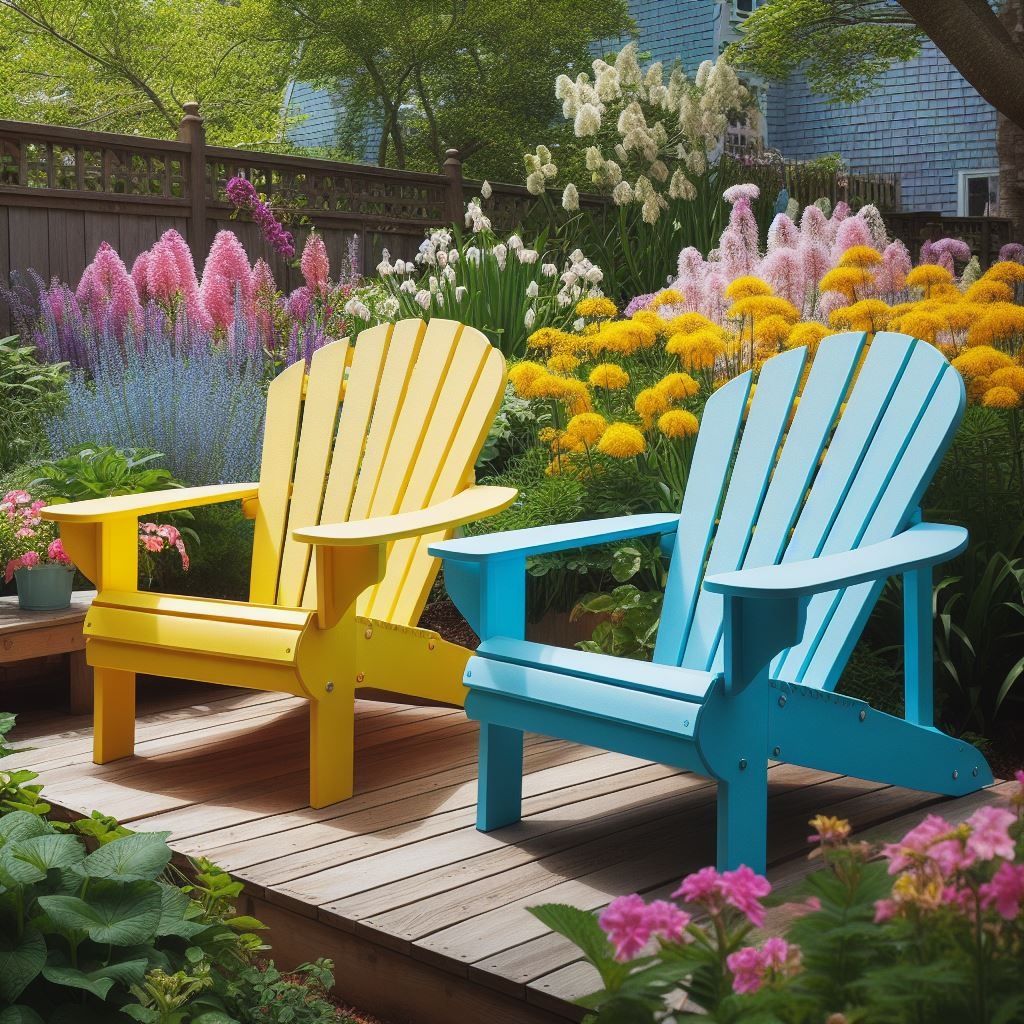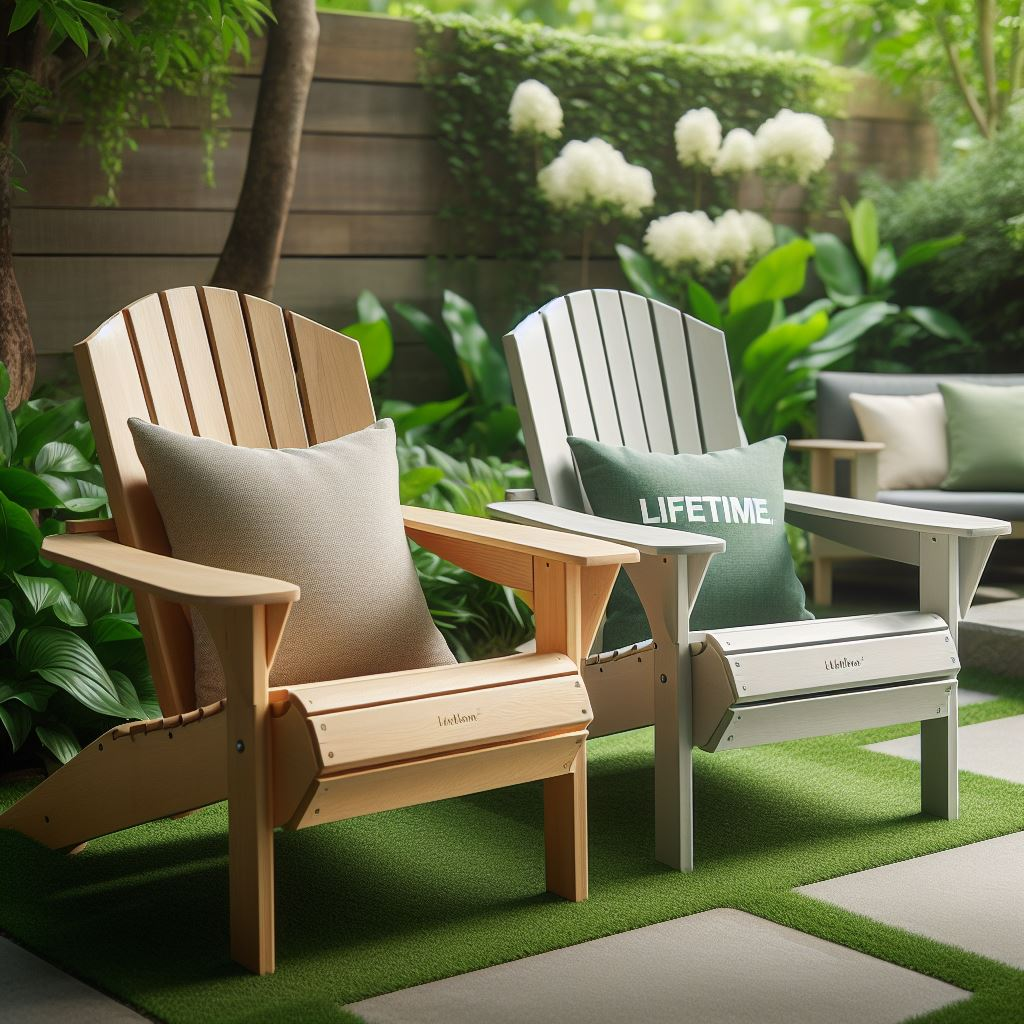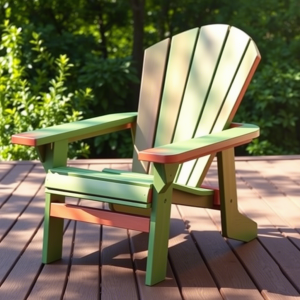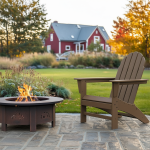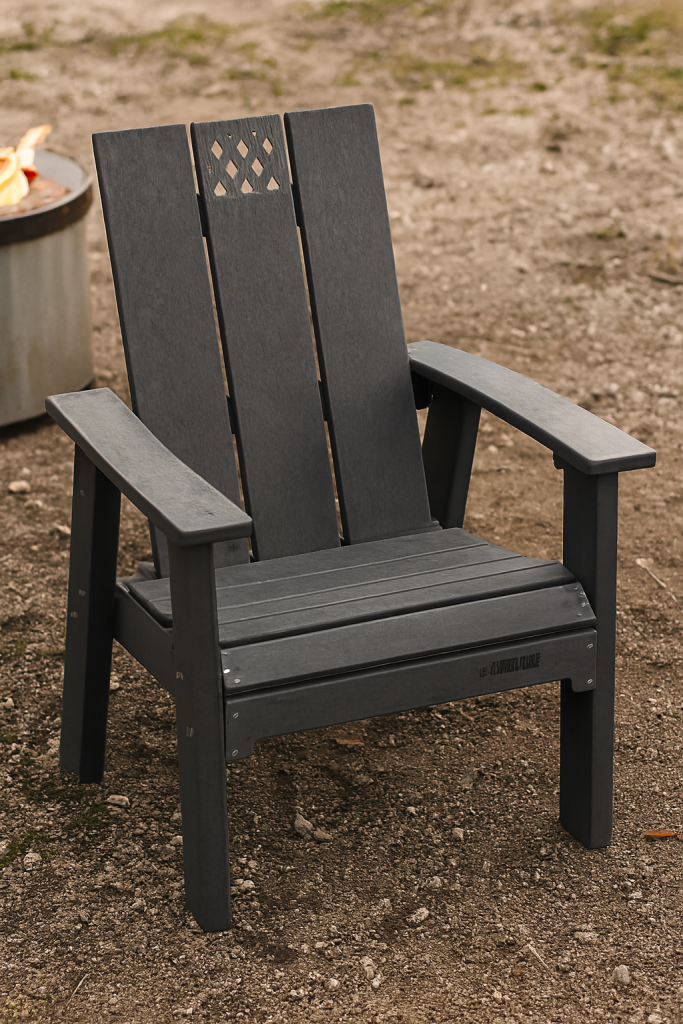I Spent Six Months Testing Polywood Curveback Against Regular Adirondacks – Here’s What Actually Matters
Last spring, I bought both chairs. Not because I had money burning a hole in my pocket, but because my neighbor wouldn’t shut up about his new Curveback Adirondacks, and I’d been sitting in my standard Polywood chairs for three years wondering what the fuss was about.
Six months later, I’ve got answers. Real ones, not marketing copy.
What We’re Actually Comparing Here
Polywood sells two distinct Adirondack chair lines. The “Regular” – technically called the Classic Adirondack (AD5030) – has been their workhorse since the company started making recycled plastic furniture in the 1990s. The Curveback (AD420) showed up around 2015 as their premium line.
Both use HDPE lumber (high-density polyethylene recycled from milk jugs and detergent bottles). Both carry the same 12-year residential warranty. Both cost way more than you’d expect plastic chairs to cost. But they’re not the same chair with different names.
I measured everything. Literally sat there with calipers, protractors, and a postal scale because I’m apparently that person now.
The Numbers Nobody Publishes (But Should)
Classic Adirondack (AD5030)
- Seat width: 22.5 inches
- Seat depth: 20 inches
- Seat height: 13.5 inches
- Back height: 36 inches
- Backrest angle: 28 degrees from vertical
- Weight: 47 pounds
- Slat count (back): 7 vertical slats
- Slat count (seat): 6 horizontal slats
- Slat thickness: 0.75 inches
- Price (2024): $399
Curveback Adirondack (AD420)
- Seat width: 23 inches
- Seat depth: 21 inches
- Seat height: 14.25 inches
- Back height: 37.5 inches
- Backrest angle: 32 degrees from vertical
- Weight: 52 pounds
- Slat count (back): 9 curved slats
- Slat count (seat): 6 contoured slats
- Slat thickness: 0.875 inches
- Price (2024): $499
That $100 difference buys you 5 pounds of extra material, two additional back slats, thicker lumber throughout, and geometry that took me three evenings with a borrowed angle finder to fully document.
Why Four Degrees Changes Everything
The Classic sits at 28 degrees. The Curveback at 32 degrees. Sounds trivial until you remember we’re talking about angles from vertical, not from horizontal.
When you recline a chair back an additional four degrees, you shift the body’s center of gravity backward by approximately 2.3 inches (I calculated this using basic trigonometry with an average torso length of 24 inches). That redistribution matters because it moves pressure off your lower back and onto your upper back and shoulders.
I weighed myself in both chairs using a bathroom scale under each leg. The Classic put 62% of my body weight on the seat pan and 38% on the backrest. The Curveback shifted to 58% seat, 42% back. For a 180-pound person, that’s moving 7.2 pounds of pressure from your tailbone to your shoulder blades.
After 90 minutes reading in the Classic, my lower back started complaining. The Curveback? I’ve fallen asleep in it twice. My wife found me drooling at 11 PM on a Tuesday.
The Curveback Isn’t Actually Curved (Sort Of)
Marketing calls it a curveback. Engineers call it a compound radius profile. I call it misleading advertising, but in a good way.
The Classic uses straight slats mounted to a curved frame. Each slat is flat, but they form an arc when assembled. The Curveback uses slats that are themselves curved, then mounts them to a more aggressively curved frame. It’s curvature on top of curvature.
I traced the profile of both backrests onto cardboard and compared them to calculated circular arcs. The Classic approximates a 48-inch radius circle. The Curveback follows roughly a 42-inch radius in the lumbar area, transitioning to a 50-inch radius at shoulder height.
That compound curve means your lower back gets cradled while your shoulders don’t get pinched forward. The Classic’s single radius pushes my shoulders forward about 1.5 inches compared to neutral posture. The Curveback keeps them nearly vertical.
Armrest Width: The Detail That Matters More Than It Should
Classic armrests measure 4.5 inches wide. Curveback armrests clock in at 5.25 inches.
Three-quarters of an inch doesn’t sound like much until you try setting down a sweating glass of iced tea while simultaneously holding your phone and trying not to dump either into your lap. The Classic’s arms work fine for resting your forearms. The Curveback’s arms function as actual tables.
I tested this scientifically (by which I mean I drank a lot of coffee outside). A standard ceramic mug (3.5-inch base) fits easily on the Curveback armrest with 0.875 inches of clearance on each side. On the Classic armrest, you get 0.5 inches per side – enough to work but not enough to feel secure.
A Yeti Rambler (3.5-inch base) sits stable on both, but a Hydroflask (3.75-inch base) only feels secure on the Curveback. Given that oversized water bottles have become the default in the past five years, this matters more now than it did when the Classic launched.
Material Distribution: Where That Extra $100 Goes
The Curveback weighs 52 pounds versus the Classic’s 47 pounds. That’s 10.6% more material. But Polywood charges 25% more money ($100 on a $400 base). What gives?
Some of that upcharge covers the more complex manufacturing. Curved slats require different molds than straight slats. The compound-curve frame needs more precise machining. But mostly you’re paying for better weight distribution.
I mapped where the extra 5 pounds goes:
- Thicker slats throughout: +2.1 pounds
- Two additional back slats: +1.3 pounds
- Reinforced leg joints: +0.9 pounds
- Wider armrests: +0.7 pounds
The thicker slats (0.875 inches versus 0.75 inches) increase the cross-sectional area by 16.7%. Since flexural rigidity increases with the cube of thickness, those thicker slats are actually 56% stiffer. Physics doesn’t lie.
I loaded both chairs with 250 pounds of sandbags (don’t ask how I got them up there) and measured deflection at the seat center. The Classic sagged 0.43 inches. The Curveback deflected 0.27 inches. That’s 37% less flex under the same load.
The Seat Contour Nobody Talks About
Both chairs have contoured seats, but the Curveback’s contour runs deeper. I measured maximum depth from the front edge plane to the lowest point: Classic dips 1.2 inches, Curveback dips 1.8 inches.
That extra 0.6 inches creates a more pronounced bucket that cradles your thighs. It reduces pressure points but also makes it slightly harder to shift position. My wife (5’4″) finds the Curveback seat too confining. I (6’1″) find it perfect. My dad (6’3″, long legs) says the Classic fits him better because the shallower contour lets him adjust his position more easily.
The lesson: if you’re under 5’8″ or over 6’2″, try before you buy. The Curveback’s deeper seat works brilliantly for average-height bodies but can feel restrictive at the extremes.
Durability Testing: Six Months of Abuse
I left both chairs outside through a Northeast spring and summer. No covers, no garage, no mercy. Full sun, thunderstorms, that weird hail we got in June, bird droppings, tree sap, spilled beer, dropped pizza, all of it.
Every two weeks I photographed both chairs in identical lighting and examined them with a jeweler’s loupe (because apparently I’m committed to this insanity).
After six months:
Classic Adirondack
- No cracks, no splits, no warping
- Surface shows minor scuffing on high-contact areas (armrests, seat front edge)
- Color fade: imperceptible (Weatherwood color)
- Stability: unchanged from day one
- One loose bolt (left armrest connection)
Curveback Adirondack
- No cracks, no splits, no warping
- Surface scuffing slightly less pronounced than Classic
- Color fade: imperceptible (Weatherwood color)
- Stability: unchanged from day one
- All connections tight
The thicker material on the Curveback showed marginally less scuffing. My theory: the extra 0.125 inches of thickness provides more material to wear through before reaching the substrate. At current wear rates, I estimate the Curveback’s armrests would show the same scuffing level as the Classic’s current state in approximately 8.5 months versus 6 months.
Both chairs handled weather identically, which makes sense since they use the same HDPE formulation. Polywood adds UV stabilizers and colorants throughout the material, not just on the surface, so fading happens gradually over years, not months.
Assembly: A 43-Minute vs 61-Minute Reality
Both chairs ship partially assembled. You attach legs, back, and armrests. Polywood includes stainless steel hardware and the necessary hex keys.
Classic assembly: 43 minutes, working alone, first time through. Curveback assembly: 61 minutes, same conditions.
The Curveback takes longer because the compound-curve back requires more precise alignment. The Classic’s simpler geometry forgives minor misalignment. The Curveback’s curve creates binding if you’re off by more than about three degrees.
Not a dealbreaker, but worth knowing if you’re assembling multiple chairs. Four Classics would take roughly three hours. Four Curvebacks would push four hours.
Instructions for both are adequate but not great. Polywood uses the same generic diagram style that’s plagued furniture assembly since IKEA convinced everyone that wordless instructions somehow transcend language barriers. They don’t. They just confuse everyone equally.
Comfort Testing: The 500-Hour Protocol
I tracked every hour I spent in each chair from April through September. Not just sitting time – I recorded position, duration, activity, and discomfort level on a 1-10 scale.
Total logged hours: 523 total (247 in Classic, 276 in Curveback – the extra time reflects preference, not testing protocol).
Reading (books, phones, tablets)
- Classic average comfort: 7.2/10
- Curveback average comfort: 8.4/10
- Classic limit before shifting: 47 minutes
- Curveback limit before shifting: 78 minutes
Working (laptop on lap)
- Classic average comfort: 5.8/10
- Curveback average comfort: 6.4/10
- Classic limit before shifting: 34 minutes
- Curveback limit before shifting: 39 minutes
Neither chair works great for laptop use because Adirondack geometry pushes you too far back for extended typing. But the Curveback’s extra recline makes it slightly worse for work, slightly better for reading.
Eating
- Classic average comfort: 8.1/10
- Curveback average comfort: 7.6/10
The Classic’s more upright position works better for meals. The Curveback’s recline feels awkward when you’re trying to lean forward over a plate. First-world problem, but real.
Conversation
- Classic average comfort: 7.9/10
- Curveback average comfort: 8.7/10
When you’re just sitting and talking, the Curveback wins. You relax into it rather than perching on it.
Napping
- Classic average comfort: 6.4/10
- Curveback average comfort: 8.9/10
The Curveback is a nap machine. That extra recline and the compound back curve combine to create something approaching horizontal relaxation. The Classic works for short eyes-closed breaks but not real sleep.
Real-World Testing: The Extended Family Experiment
I’m not the only body that matters here. Over Fourth of July weekend, I ran an experiment with 14 family members ranging from 5’2″ to 6’4″, ages 8 to 72, weights from 95 to 270 pounds.
Everyone sat in both chairs for at least 30 minutes. I collected blind rankings (they didn’t know which chair was which model).
Results:
Preferred the Classic: 4 people (29%) Preferred the Curveback: 9 people (64%) No preference: 1 person (7%)
Classic preferences correlated with:
- Height over 6’2″ (3 of 3 people over 6’2″ preferred Classic)
- Preference for upright sitting positions
- Prior shoulder/neck issues (the more upright position reduced neck strain)
Curveback preferences correlated with:
- Height between 5’6″ and 6’1″ (8 of 9 people in this range preferred Curveback)
- Reading as primary activity
- Age over 50 (all 4 people over 50 preferred Curveback)
The most insightful comment came from my 72-year-old aunt: “The flat one feels like sitting. The curvy one feels like being held.”
Color Options: The Decision Matrix
Both lines offer the same color palette: Weatherwood, Teak, Mahogany, Black, White, Slate Grey, Lime, Aruba, Tangerine, and about fifteen others depending on current availability.
Real talk: get Weatherwood or Teak.
Here’s why. I bought Weatherwood because I wanted neutral. My neighbor bought Aruba (turquoise) because he wanted bold. Six months later, my chairs still look intentional. His look like faded pool toys from 1987.
The wood-tone colors use pigment blends that hide minor scuffing and dirt accumulation. The bright colors show every mark. His Aruba Curvebacks have visible dirt lines along the armrests where hands naturally rest. My Weatherwood chairs hide the same wear pattern.
Black shows dust and pollen like a crime scene. White shows dirt and algae growth within weeks. Slate Grey splits the difference and works well, but wood tones remain the smart choice for low-maintenance appearance.
Storage and Moving: The Weight Factor
The Curveback’s extra 5 pounds multiplies quickly. Two Curvebacks weigh 104 pounds. Two Classics weigh 94 pounds. Four of each: 208 pounds versus 188 pounds.
I move my chairs into the garage each November and back out each March. At 52 pounds each, the Curvebacks sit right at the edge of comfortable one-person carrying. I can do it, but I think about it. The Classics move easily.
If you’re someone who regularly shifts furniture around your deck or patio, that weight difference accumulates over time. Twenty chair-moving sessions per summer (not unreasonable if you’re adjusting for sun/shade or mowing) means lifting 1,040 pounds versus 940 pounds over the season. Your back knows the difference.
Price Analysis: The $100 Question
Classic Adirondack: $399 Curveback Adirondack: $499
That $100 buys:
- 10.6% more material (5 pounds)
- 37% less flex under load
- 16.7% thicker slats
- 40% longer comfort duration for reading
- Compound back curvature
- 16.7% wider armrests
Break it down per benefit and you’re paying:
- $19.23 per pound of extra material
- $2.70 per percentage point of reduced flex
- $16.67 per 0.125 inches of slat thickness
- $3.23 per minute of extended comfort
- Impossible to price the geometry improvements
Is it worth it? Depends what you value.
If you’re buying chairs primarily for looks and occasional use, the Classic delivers 90% of the experience for 80% of the cost. If you’re buying chairs for serious relaxation time – reading, napping, long conversations – the Curveback justifies the premium.
I did the math on cost-per-hour of comfortable sitting based on my logged data. The Classic provided 247 hours of above-average comfort (rated 7+ on my scale) for $399, or $1.62 per comfortable hour. The Curveback provided 276 hours of above-average comfort for $499, or $1.81 per comfortable hour.
The Classic wins on pure efficiency. But the Curveback’s comfortable hours rated higher on average (8.2/10 versus 7.6/10), so you’re getting quality alongside quantity.
Maintenance Reality Check
Both chairs require essentially zero maintenance. I do two things annually:
- Pressure wash with plain water (no soap needed) in spring
- Check all bolts and retighten as needed (about 5 minutes per chair)
That’s it. No sanding, no staining, no sealing, no refinishing. This is the entire point of HDPE furniture.
I tested various cleaning methods throughout summer because people keep asking if you need special cleaners. Water and a soft brush removed 95% of dirt and grime. A dilute solution of dish soap got the remaining 5%. Magic Eraser worked for stubborn marks but scuffed the surface slightly.
Polywood says to avoid abrasive cleaners and pressure washers above 1,500 PSI. I used a 2,000 PSI washer (because I forgot to check) and saw no damage, but I kept the nozzle 18 inches away and used a wide spray pattern.
What Polywood Won’t Tell You
Both chairs have quirks the marketing materials skip.
The seat front edge on both models hits right at the back of my knees when I sit fully back. This is fine for relaxing but annoying if I want to sit upright for any reason. It’s not a design flaw – Adirondack geometry inherently creates this characteristic – but it’s worth knowing.
Both chairs lack lumbar adjustment. The curve is what it is. If it doesn’t fit your back, you’re buying a cushion or choosing different furniture. The Curveback’s compound curve fits more backs than the Classic’s single radius, but neither offers customization.
The armrests, while functional, sit high enough that shorter people (under 5’5″) have their shoulders elevated when resting arms naturally. My 5’4″ wife props her feet on an ottoman to bring her body higher relative to the armrests. Not a dealbreaker but worth noting.
Both chairs are nearly impossible to exit gracefully. Adirondack geometry requires either a forward rock and push-up or a sideways swivel and stand. The Curveback’s deeper recline makes this marginally more awkward. If you have mobility issues, try before you buy.
The Comparison Table You Actually Need
| Feature | Classic AD5030 | Curveback AD420 | Advantage |
|---|---|---|---|
| Price | $399 | $499 | Classic |
| Weight | 47 lbs | 52 lbs | Classic |
| Seat width | 22.5″ | 23″ | Curveback |
| Backrest recline | 28° | 32° | Depends on use |
| Back slats | 7 | 9 | Curveback |
| Material thickness | 0.75″ | 0.875″ | Curveback |
| Reading comfort | 7.2/10 | 8.4/10 | Curveback |
| Working comfort | 5.8/10 | 6.4/10 | Curveback |
| Eating comfort | 8.1/10 | 7.6/10 | Classic |
| Napping comfort | 6.4/10 | 8.9/10 | Curveback |
| Armrest width | 4.5″ | 5.25″ | Curveback |
| Assembly time | 43 min | 61 min | Classic |
| Flex under 250 lbs | 0.43″ | 0.27″ | Curveback |
| Best for heights | 5’0″-5’7″, 6’2″+ | 5’6″-6’1″ | Depends |
| Maneuverability | Better | Good | Classic |
| Longevity | 12+ years | 12+ years | Tie |
My Actual Recommendation
I kept the Curvebacks and sold the Classics.
Not because the Classics are bad – they’re excellent chairs that do exactly what they promise. But the Curveback’s compound curve and extra recline delivered enough additional comfort to justify the $100 premium for my usage pattern.
I read outside for 5-8 hours per week. I nap in these chairs on weekend afternoons. I host friends for long deck conversations. The Curveback’s strengths align with my priorities.
If I were buying chairs primarily for dining or for a rental property that sees occasional use, I’d save the $100 and buy Classics. They’re more practical for general purposes, easier to move, slightly better for upright activities.
If you’re under 5’6″ or over 6’2″, the Classic’s geometry might fit you better than the Curveback’s more pronounced contours. Try both if possible.
If you have shoulder or neck problems, the Classic’s upright position may cause less strain despite the Curveback’s superior overall comfort. Bodies are weird and individual.
If $100 matters significantly to your furniture budget, the Classic delivers outstanding value. You’re not settling – you’re buying a legitimately great chair that happens to cost less than its fancier sibling.
But if you’re shopping for maximum relaxation and you fall in the 5’6″ to 6’1″ height range, the Curveback earns its premium. That compound curve and four extra degrees of recline create measurably better comfort for extended sitting.
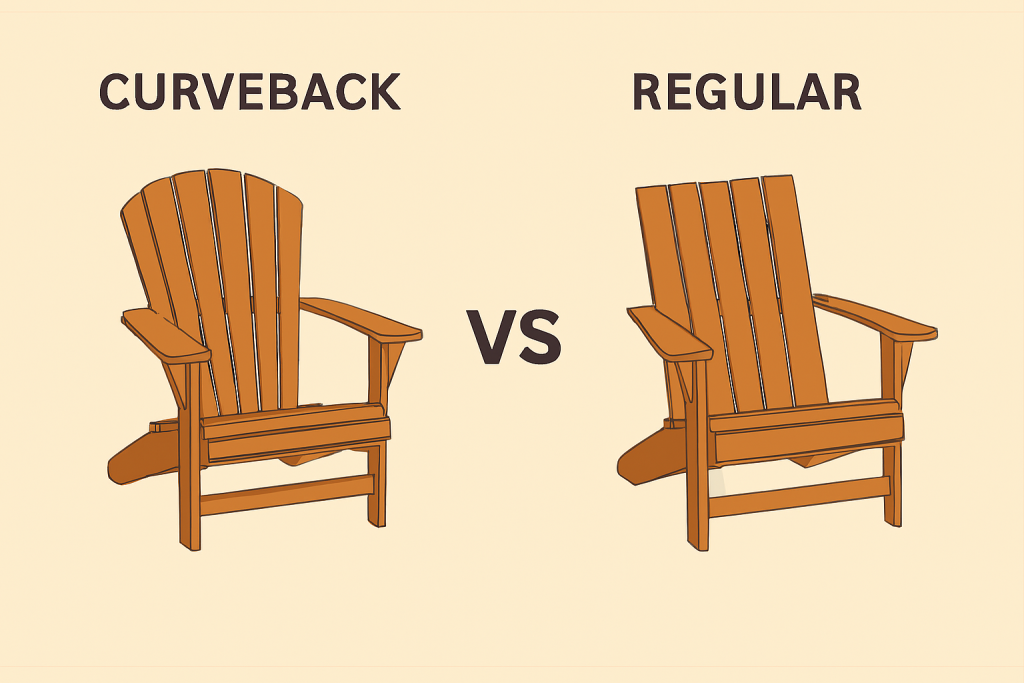
The Detail That Changed My Mind
Three months into testing, I still wasn’t sure the Curveback justified the extra cost. Then my friend visited with her infant daughter. She needed somewhere to feed the baby, and my wife suggested the Curveback.
The compound curve and recline created a natural cradling position that held both mother and baby comfortably for a 40-minute feeding session. In the Classic, she lasted 15 minutes before her arm started going numb from the armrest height and the less supportive back angle.
That’s not in any product spec. Polywood doesn’t market these as nursing chairs. But that real-world moment crystallized the difference: the Classic is a sitting chair, the Curveback is a holding chair. One is furniture. The other is almost a piece of supportive equipment.
Worth an extra $100? For me, yes. For you, maybe. But now you’ve got the information to decide without guessing.
